ASURA
We all grow up believing that Asura symbolises evil, but in Puranic stories we hear tales of good asuras and bad devas too. Asura king Bali was known as one of the most virtuous asuras of all, who governed the regions of southern India, as a benevolent king.
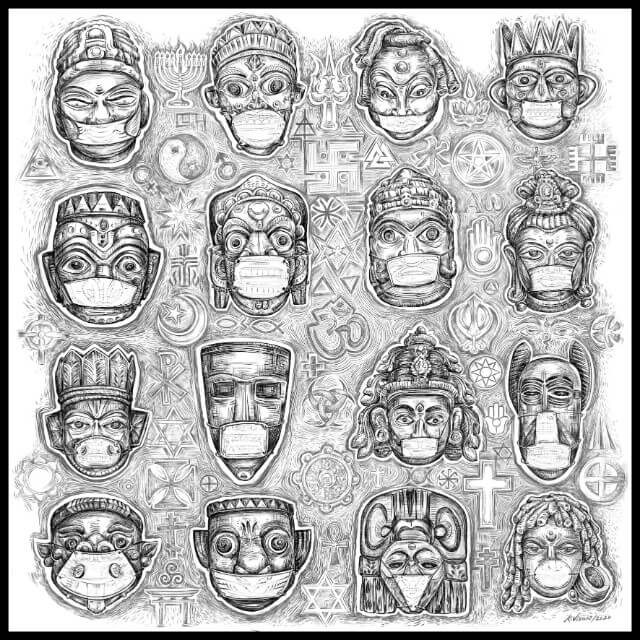
ASURA
To understand the story behind the term asura, we need to go back in time when the term asura was first introduced in the Indian mythology. Asura appeared first in the Vedas, and it referred to a super human or divine leader. Hence, the term asura does not mean demon or evil. In the earliest verses of the Vedic texts Agni, Indra, Rudra, Varuna and most Vedic deities were called asuras. Asura was an adjective meaning “mighty” and “powerful”. However, in the later verses of the Vedic texts, asuras are defined as “evil spirits, demon and opponent of the gods”.
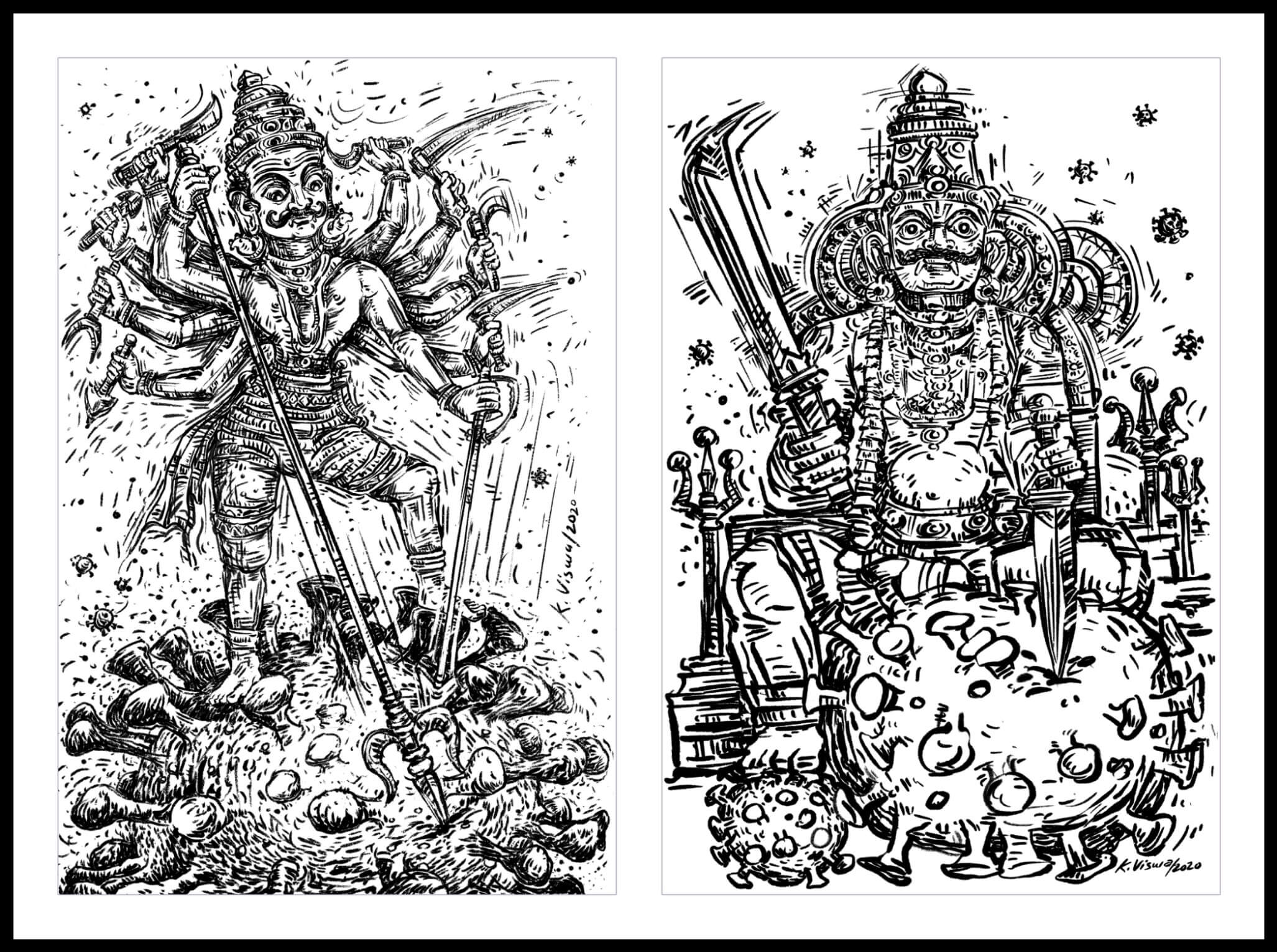
ASURA
Both devas and asuras were children of Kashyapa, born of different wives. They were in a state of eternal warfare with their stepbrothers. Originally, the devas were mortal and dying in large numbers in their perennial war with the asuras. Later, both the asuras and devas formed an alliance to obtain nectar from the sea of milk which would insure their immortality. With the help of Vishnu, the devas succeeded in cheating the asuras of their share of the nectar. After this incident, devas could be defeated only when the asuras managed to obtain strong boons from the Holy Trinity (Brahma, Vishnu and Shiva).
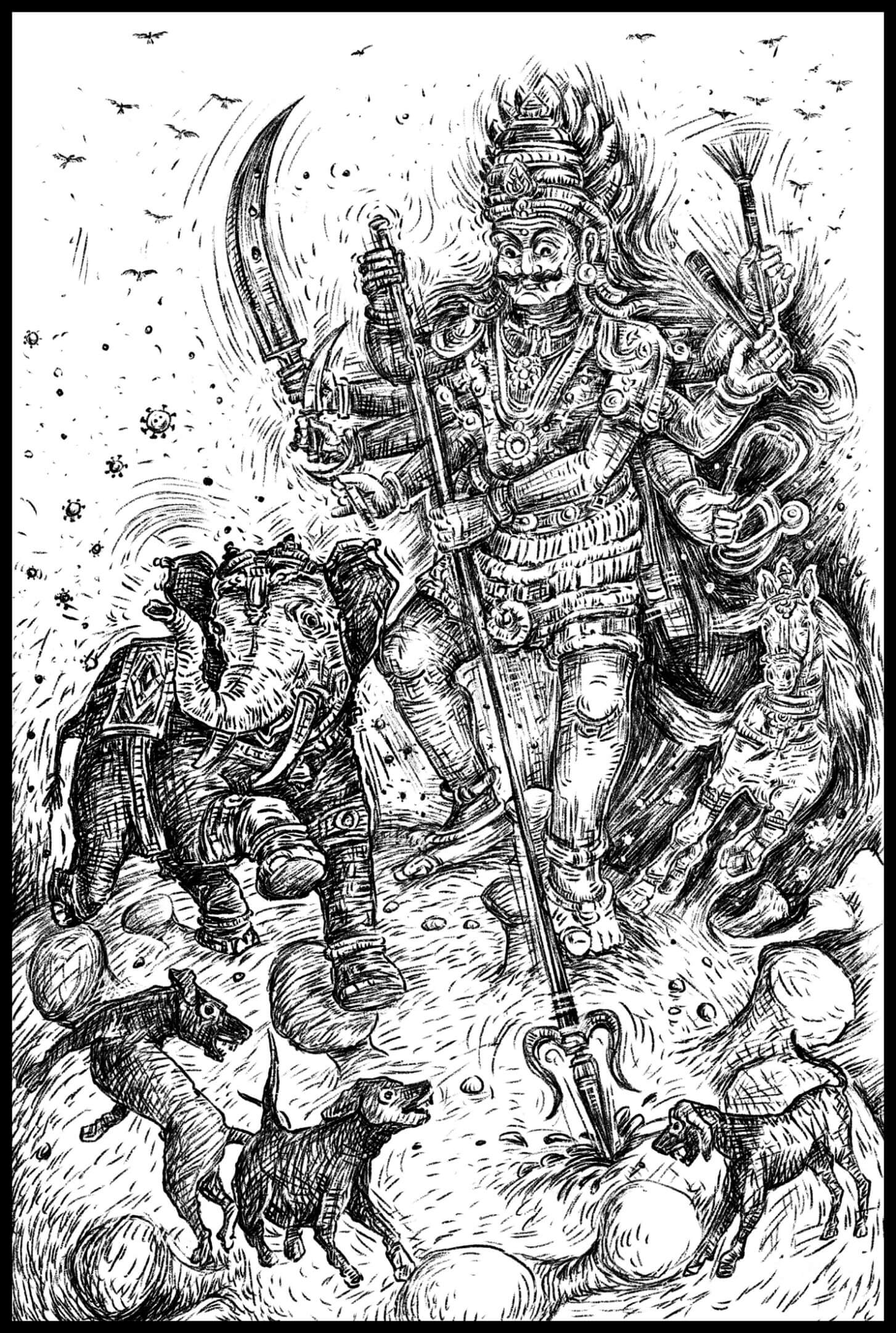
ASURA
The scriptures speak of asuras as excellent warriors, who fought for their stolen rights, with vigor and veracity. Whereas, the devas, though are the symbol of goodness, often indulged in treachery and trickery. So, there is nothing as good devas and bad asuras. Thus, instead of taking the stories of the Indian scriptures superficially, we should dwell deep into the inner meaning of the texts.
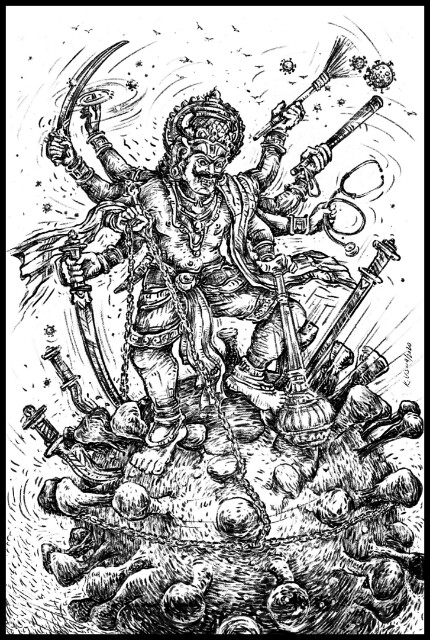
ASURA
According to the Bhagavad Gita, “all beings in the universe have both the divine qualities and the demonic qualities within each.” The tales have enumerated the consequences of both the deeds and have given us the responsibility to choose according to our moral ethics. The choice is ours!
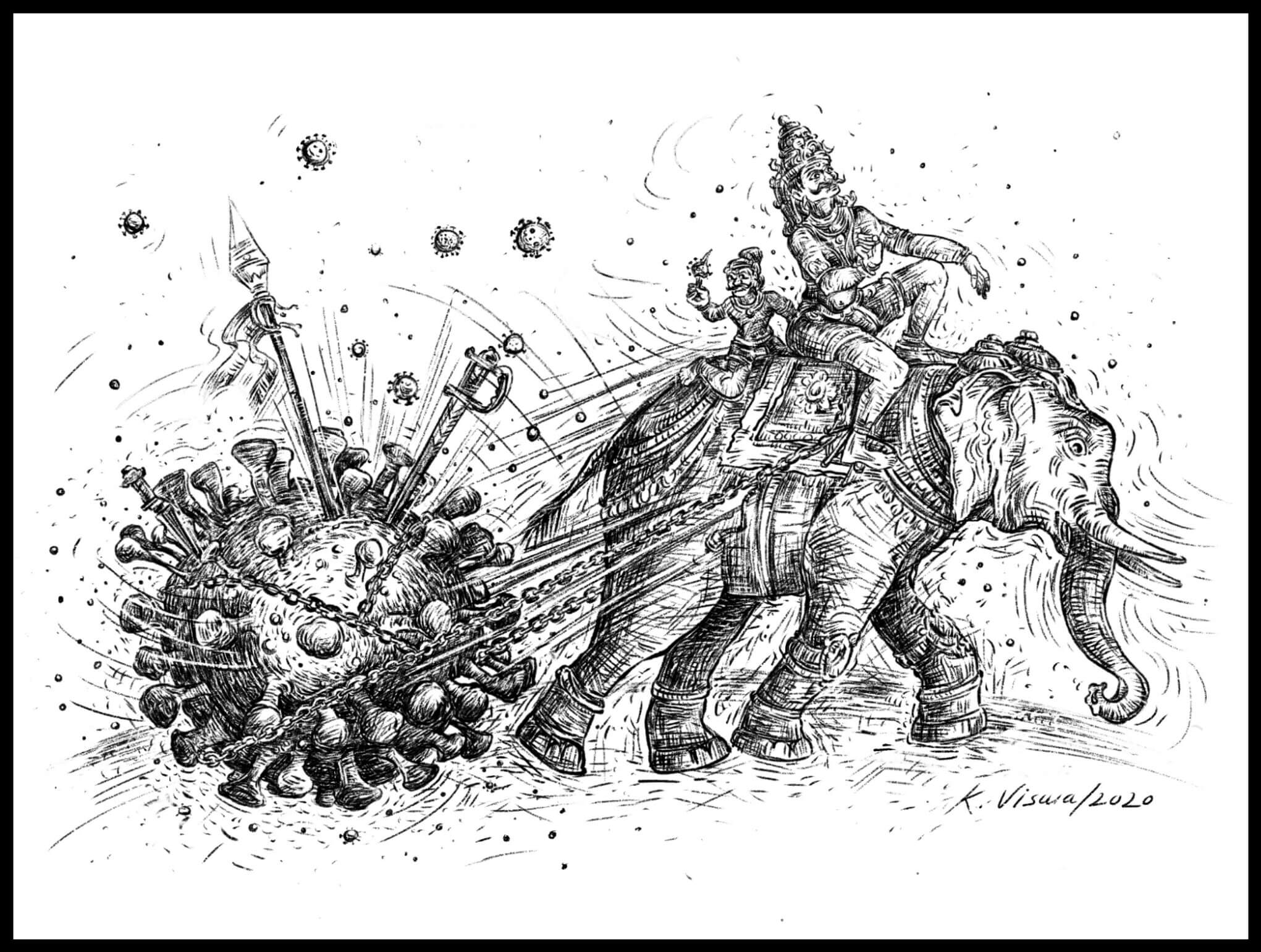
ASURA
Our skilled Artist Kedaram Viswanathan, believes in the asuratva (power and might) of the devas and asuras and thus has invoked their presence to save the world from the deadly COVID-19 pandemic that has caused immense destruction and despair.

AANDAVAN KATTALAI
Granting us the Ten Commandments of safe living is Lord Murugan or Kartikeya. He is the Hindu War God who destroys the deadly enemy with his Vel, the spear. We believe in Lord Murugan’s power to vanquish the deadly disease that has terrorised the whole earth.
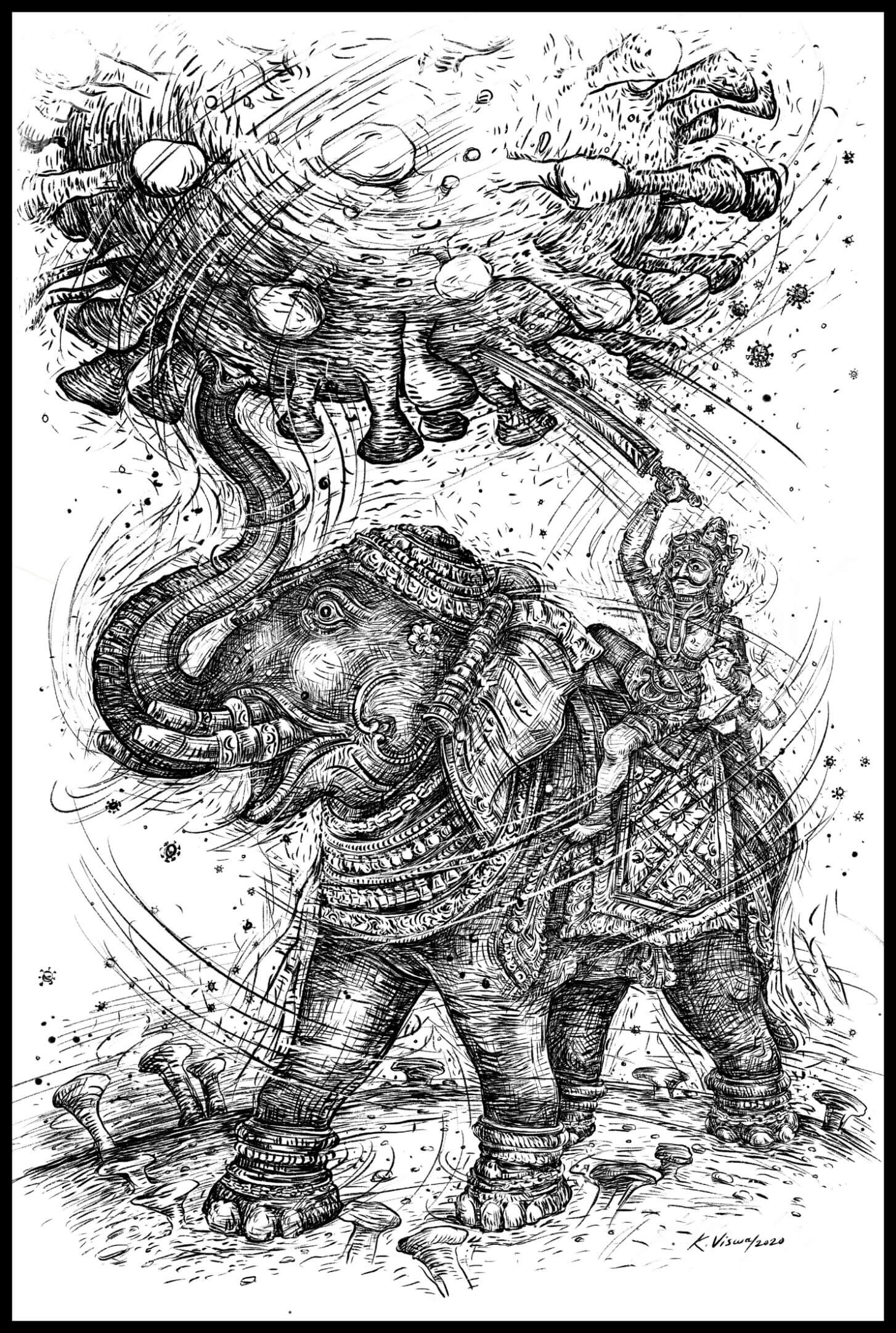
LORD AYYANNAR
Lord Ayyannar is a guardian deity of South India, who is believed to protect the villages from all sorts of external threats. In the above art work we find Lord Ayyannar battling the deadly virus to save his people, and proving that he is our guardian protector.
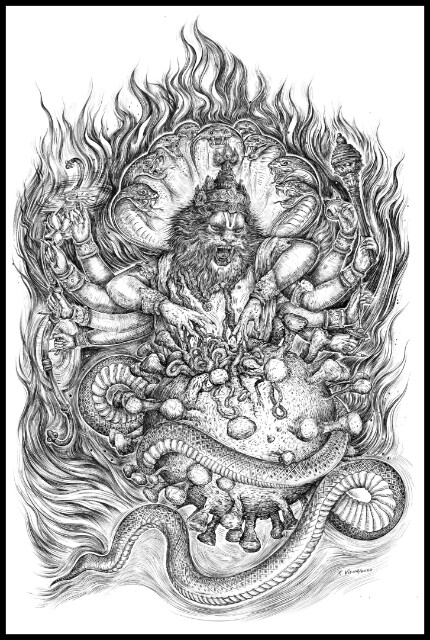
NARASIMHA AVATAR
In Indian mythology, the fierce Narasimha (an avatar of Vishnu) is known as the “Great Protector” who especially defends and protects his devotees in times of need. In this work of art, we see Narasimha in battle with the invisible COVID-19 virus.
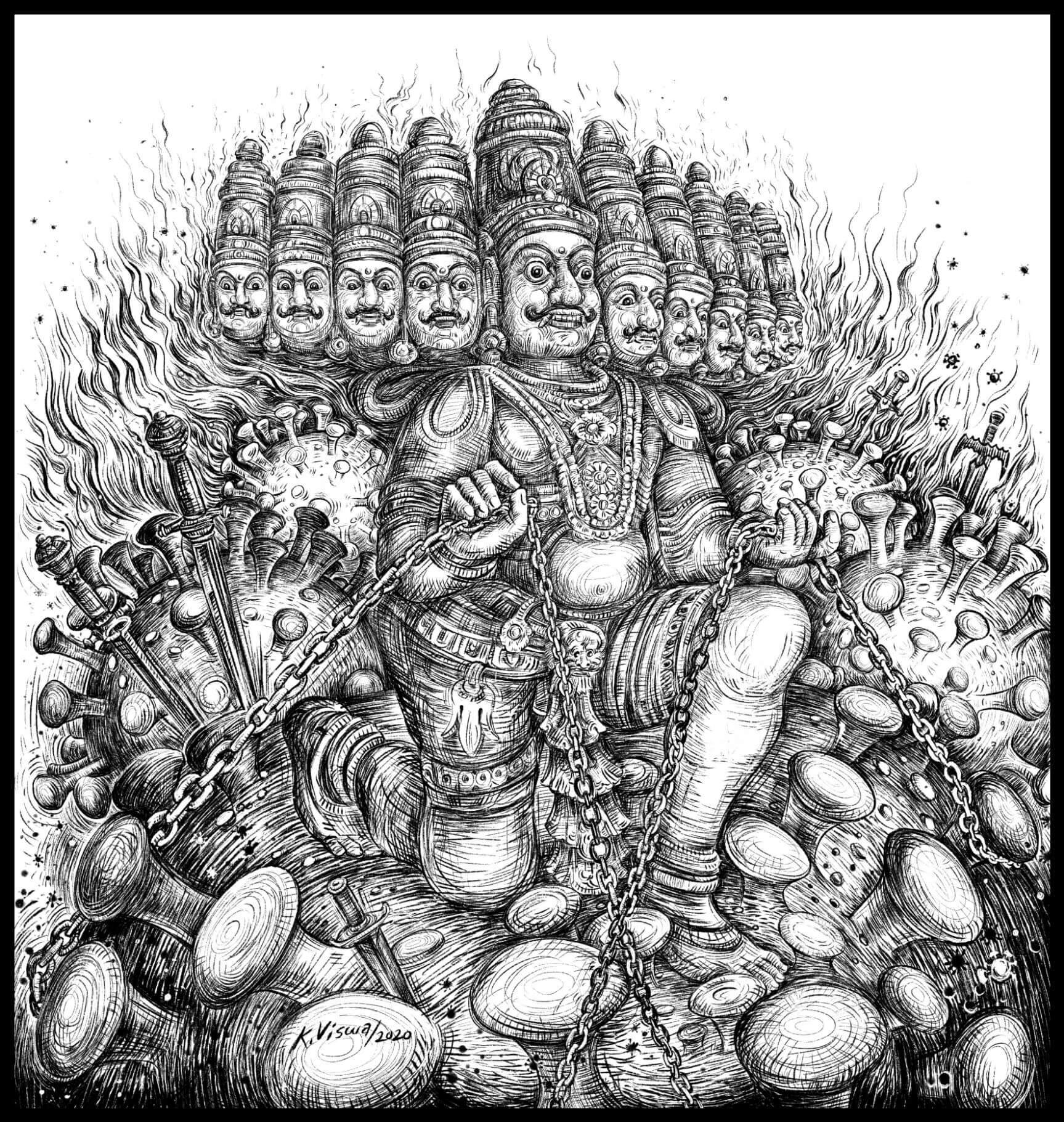
RAVANA
Ravana, the legendary emperor of Sri Lanka, was one of the most powerful beings ever to roam this universe. Ravana’s ten heads were symbolic of his vast knowledge. Since Ravana was an intelligent and magnificent king, may his spirit rage war to protect his subjects in these perilous times.

10 COMMANDMENTS
Now, it’s time for Unity. For all humans, devas and asuras, to be united, wearing the immediate weapon – the mask to fight the pandemic. Even if we have numerous dissimilarities, we have been affected similarly by the deadly virus. This pandemic has reminded us that we are all alike, and we are in this together. Together, we will emerge stronger, wiser and healthier.
Article: Ms. Morlen Nisha Gomes

